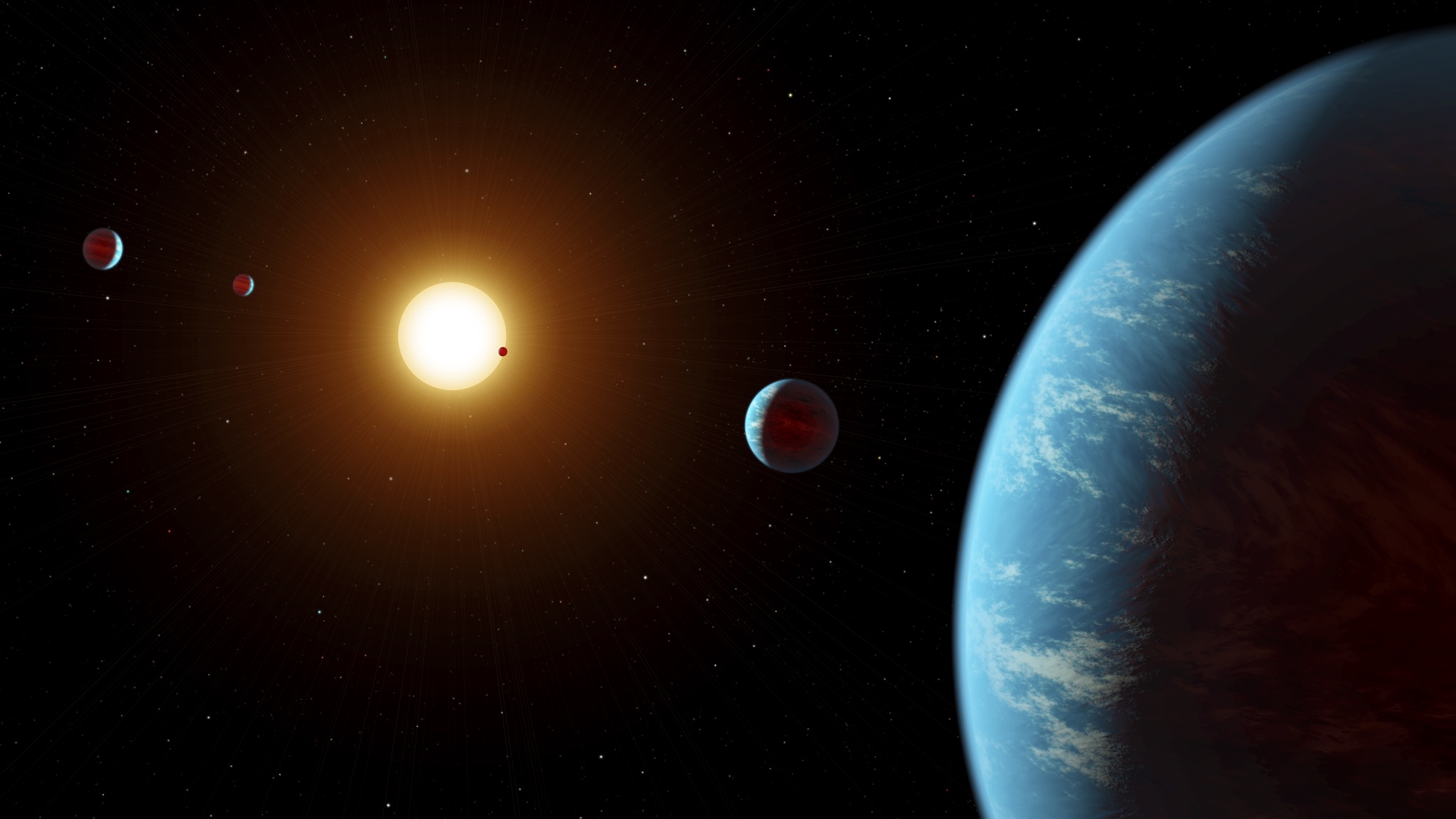'Mini-Neptunes' may be rocky water worlds
A strong greenhouse effect allows these "super-Earth" exoplanets to masquerade as "mini-Neptunes."

Two papers recently modeled the weird environment of "super-Earth" and "mini-Neptune" exoplanets orbiting extremely close to their parent stars, so close that radiation from the stars is baking the planets' surfaces.
Definitions for these two types of exoplanets vary among astronomers, but super-Earths are generally defined as alien worlds that are close to Earth's size and mass, and mini-Neptunes are gassy worlds that are less dense and a little closer to the mass of Neptune, with atmospheres made up of hydrogen and helium. Neptune itself is roughly 17 times more massive than Earth and has a diameter four times larger.
After running some models about mini-Neptunes baked by close-up stars, the first study, published June 15 in The Astrophysical Journal Letters, suggests that the mini-Neptunes may be an illusion. Instead, the intense stellar radiation could be affecting smaller super-Earths, making these exoplanets masquerade as mini-Neptunes with a low density.
Related: Black-hole bursts turn 'mini-Neptunes' into rocky 'super-Earths'
The lower density of these exoplanets could be explained by "a thick layer of water that experiences an intense greenhouse effect caused by the irradiation from their host star," France's National Center for Scientific Research (CNRS), which participated in the study, said in a statement.
The atmospheres of both mini-Neptunes and super-Earths could be greatly affected by stellar radiation, added a second CNRS researcher paper published June 9 in the journal Astronomy and Astrophysics. That study found that Earth-size exoplanets containing water could see their atmospheres grow much larger under the influence of a strong greenhouse effect induced by a star's radiation. Therefore the mini-Neptunes "could be super-Earths with a rocky core surrounded by water in a supercritical state," CNRS said, adding that the finding suggests super-Earths and mini-Neptunes may form in the same way.
This same phenomenon could be happening in the TRAPPIST-1 b, c, and d exoplanets, the scientists added, urging more study of these alien worlds to refine their tentative conclusions. This exoplanet group is part of a set of several purportedly Earth-size planets orbiting a star named TRAPPIST-1; at least some of the planets could be considered habitable (meaning, liquid water would exist on their surface.)
Breaking space news, the latest updates on rocket launches, skywatching events and more!
The Astronomy and Astrophysics paper was led by Martin Turbet, a postdoctoral researcher at the Geneva Astronomical Observatory. The Astrophysical Journal Letters paper was led by Olivier Mousis, a professor at Aix-Marseille University in France. Both papers included CNRS researchers.
Follow Elizabeth Howell on Twitter @howellspace. Follow us on Twitter @Spacedotcom and on Facebook.

Elizabeth Howell (she/her), Ph.D., was a staff writer in the spaceflight channel between 2022 and 2024 specializing in Canadian space news. She was contributing writer for Space.com for 10 years from 2012 to 2024. Elizabeth's reporting includes multiple exclusives with the White House, leading world coverage about a lost-and-found space tomato on the International Space Station, witnessing five human spaceflight launches on two continents, flying parabolic, working inside a spacesuit, and participating in a simulated Mars mission. Her latest book, "Why Am I Taller?" (ECW Press, 2022) is co-written with astronaut Dave Williams.
